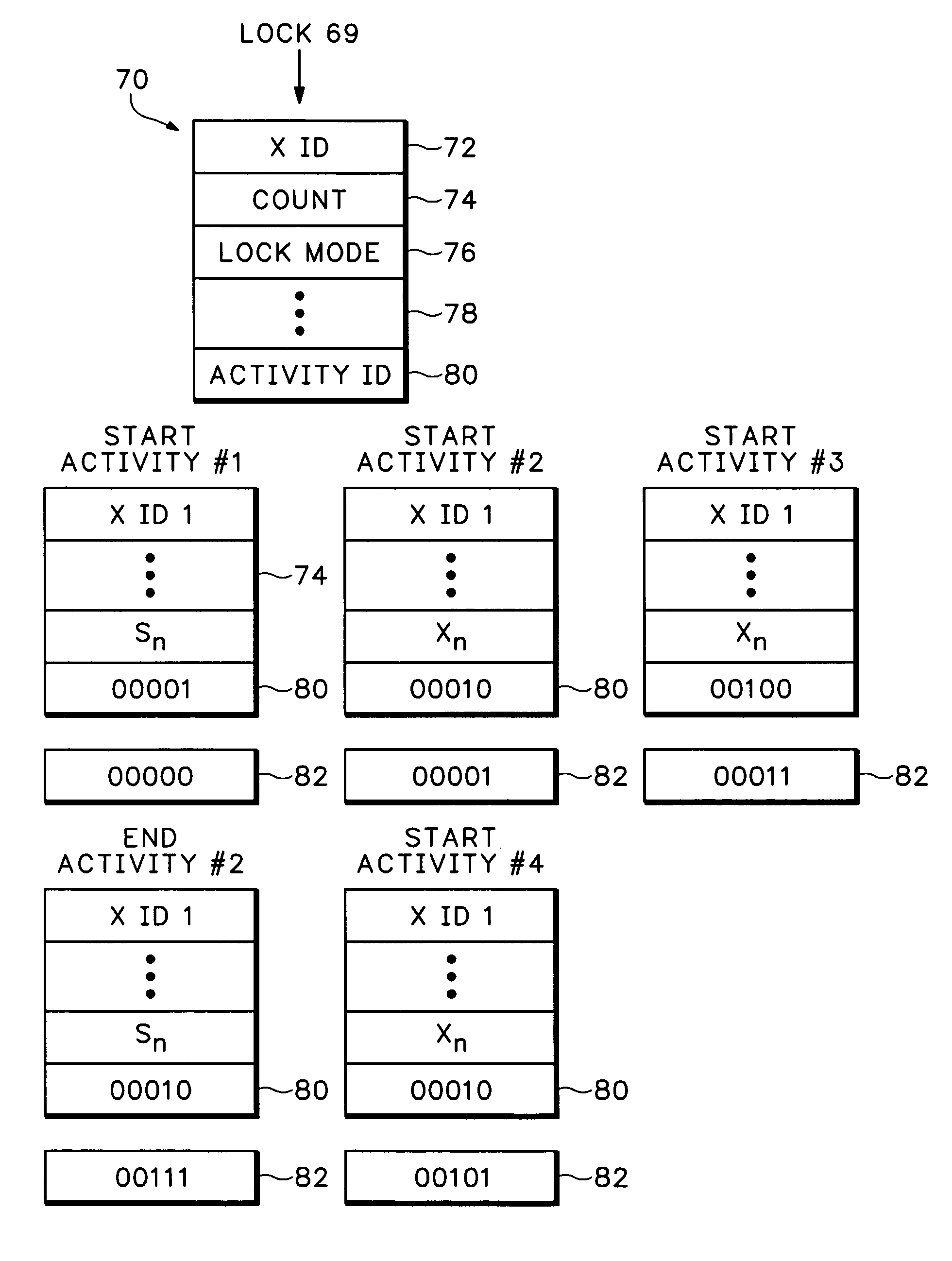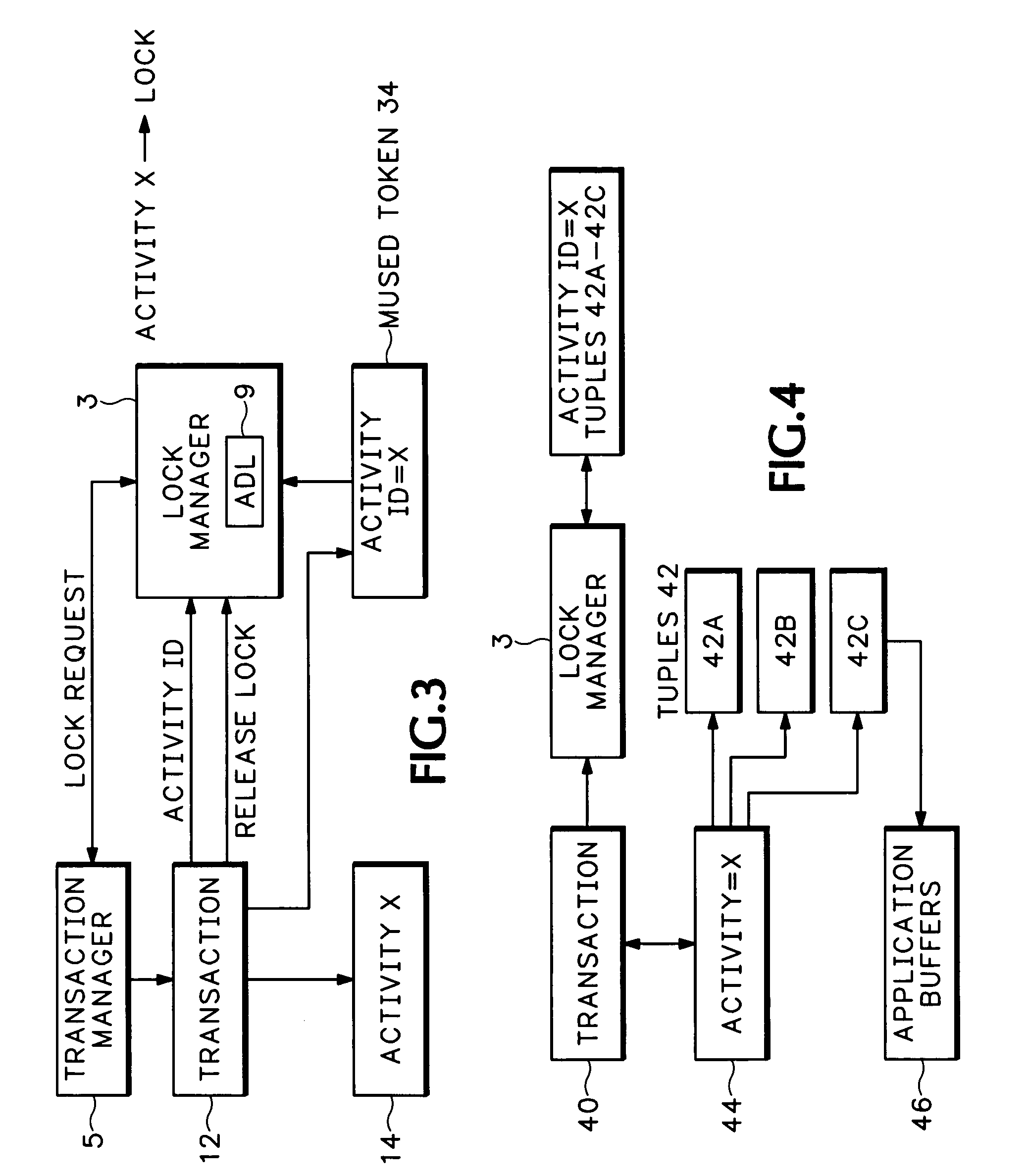Method and apparatus for increasing transaction concurrency by early release of locks in groups
- Summary
- Abstract
- Description
- Claims
- Application Information
AI Technical Summary
Benefits of technology
Problems solved by technology
Method used
Image
Examples
Embodiment Construction
[0017]FIG. 1 shows a database system that includes a database 8 and a processor 4 (Central Processing Unit (CPU) and memory) that stores and executes software for a Database Management System (DBMS) 6. A computing device2 containing processor 4 in one example is a server. The processor 4 may be a single CPU or multiple CPUs that operate in the server 2. The database 8 is typically stored on a plurality of Direct Access Storage Devices (DASDs) although only one such device is illustrated in FIG. 1. The DASDs may be, for example, disk packs, and it will be understood by those skilled in the art that the database system includes the required DASD controllers and channels that establish the communication between the database 8 and the processor 4. In another example the database (8) may be stored inside the main memory (4) itself.
[0018]Terminals 1 can be any Input / Output (I / O) device that accepts requests from and returns results to users. For example, the terminals 1 may be Personal Co...
PUM
 Login to View More
Login to View More Abstract
Description
Claims
Application Information
 Login to View More
Login to View More - R&D
- Intellectual Property
- Life Sciences
- Materials
- Tech Scout
- Unparalleled Data Quality
- Higher Quality Content
- 60% Fewer Hallucinations
Browse by: Latest US Patents, China's latest patents, Technical Efficacy Thesaurus, Application Domain, Technology Topic, Popular Technical Reports.
© 2025 PatSnap. All rights reserved.Legal|Privacy policy|Modern Slavery Act Transparency Statement|Sitemap|About US| Contact US: help@patsnap.com



